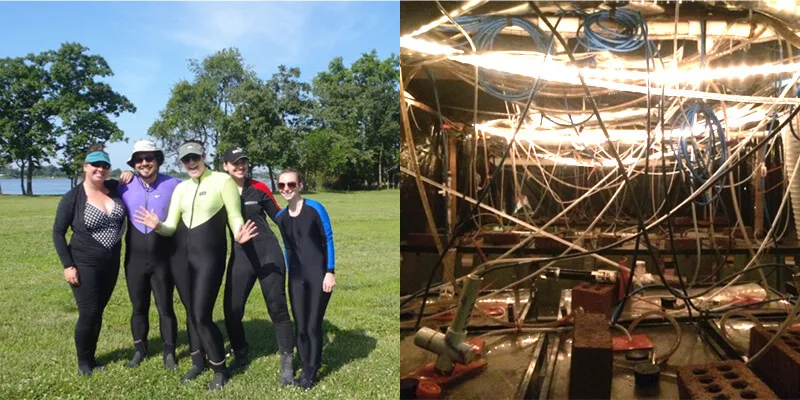Situated on the shores of the Chesapeake Bay, the Smithsonian Environmental Research Center (SERC) is a community of researchers and educators dedicated to solving environmental problems. The 2,650 acre campus consisting of forests, wetlands, and protected shoreline provides an ideal location for both environmental research and exploration. Because of its proximity to the coast, research at SERC particularly focuses on coastal ecosystems and the dynamics between the convergence of land and water. SERC is made up of multiple labs under larger guilds with a specific research focus. Some guilds include marine studies, estuarine ecology, terrestrial ecology, biogeochemistry, and others. This summer, I was an intern at the marine studies guild working in the marine and estuarine ecology lab.
Because my internship at SERC was through the National Science Foundation’s Research Experience for Undergraduates (NSF-REU) one of my main projects was designing and conducting my own experiment. I learned about what actual scientific research is like, particularly the amount of unseen failures behind a single successful project. Scientific journals don’t publish the failed methods and unsuccessful trials, but they remain an integral part of the scientific process.
The first experiment I attempted to conduct was an investigation of whether the egg development of naked gobies, a benthic fish native to the bay, was affected by cycling levels of dissolved oxygen and pH. To do this, I spent hours constructing nests for the gobies to lay their eggs in out of PVC pipes and bread trays. After placing them in the water off the dock on SERC’s property and checking them daily for several weeks, the gobies had not laid any eggs in the nests. Finally, I had to give up on my goby project and start something new.
It was difficult to let go of the project I had spent so much time on, but I learned by example that persistence is a necessity in research. After consulting the lab team, we decided that doing a research project with the oysters we had recently acquired would be a good option in lieu of gobies. The oyster experiments ended up having interesting results, and I enjoyed being able to work with them. While things may not always follow your intended path, I found that dedication and creative thinking can lead you to great places.
In addition to my own REU project, I also assisted the lab with their ongoing projects. This involved a growth experiment with Atlantic silversides and a suite of behavioral experiments. I learned so much more than I ever imaged just by being in the lab. I gained practical research skills such as using pH meters, creating spreadsheets in Excel, and collecting data both in the lab and in the field. Through literature searches, I learned about estuarine ecology and my research organisms. There were also many important things I learned about that I never expected, like science communication, ethics in working with animals, and the value of working with a team.
While I learned a lot through these outlets, I found the best way to learn new things is to ask questions. The people I worked with were fantastic and patiently answered every question I bombarded them with. They were dedicated to teaching me, both about science and life in general, and getting to know them was one of the most valuable parts of my internship. I found that internship experiences are what you make them, and if you show interest in what you’re doing, people will respond positively. Being unapologetically enthusiastic about what you’re doing and asking a lot of questions, no matter how insignificant they might seem, will make any experience worthwhile.
